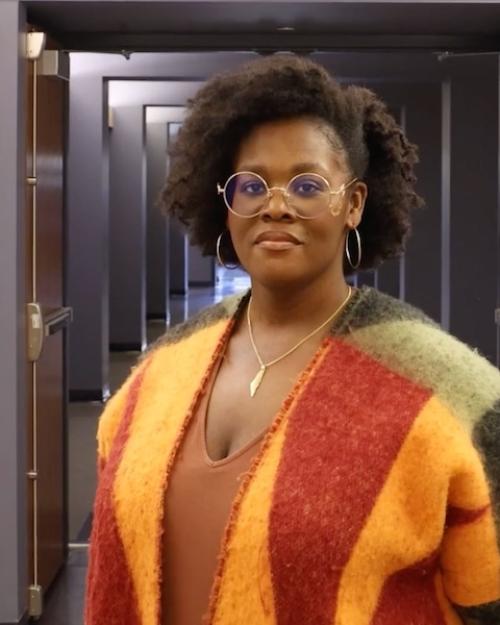Individuals and corporations contribute more money to charitable organizations than they ever have before. Is this golden age of gift-giving a positive or negative force in modern culture?
For Timothy Campbell, professor of Romance studies in the College of Arts and Sciences, the answer is complex and relates to a passion he has recently focused on in his research: Italian film. In his new book, “The Techne of Giving: Cinema and the Generous Form of Life,” Campbell questions whether a new conception of giving and receiving should be considered and draws inspiration for his exploration from classic films from Italy.
Timothy Campbell delivering Cornell University Library "Chat in the Stacks" about "The Techne of Giving"
Campbell suggests there are ways other than gift-giving to show generosity, such as donating time or volunteering for a charitable organization. Gift-giving can also take the form of looking inward and thinking differently about yourself or adopting a new perspective on an issue, he adds.
“In the exchanges that we have with one another over the course of a day, how much of the giving that we engage in is related to some kind of calculation? Because to me, sadly, that is what too often makes a gift today,” he says. “I wonder if this hasn’t cut off some of the oxygen for these other possibilities around giving that aren't about calculation.”
When he began writing his book, Campbell considered it a “thought experiment” to see if he could bring films from Italian directors into dialogue with philosophy to see if the juxtaposition could generate new insights for each discipline. But by the end of the book, he became focused on the practical implications of his research and how it relates to the preoccupation with gift-giving in modern culture.
Campbell analyzes the issue of giving and receiving in several Italian films, including Michelangelo Antonioni's “L'avventura,” a 1960 film about a woman’s disappearance on a Mediterranean island. While she is lost, the protagonist demonstrates the difference between a type of grasping that characterizes possession, and not holding something as your own.
“The film is about gift-giving on one level,” Campbell says. “It’s about how she doesn’t take something from someone and hold onto it and make something out of it. And in the same way, when she gives, there’s no idea that she’s asking for something in return.”
Campbell, who has written two previous books, calls these acts examples of “disabled giving,” which he says has implications for people who choose not to give and receive in the traditional way.
Drawing on contemporary continental philosophy, Campbell also incorporates the ideas of D.W. Winnicott, an English psychoanalyst who studied children at play and the way they related to objects. In Winnicott’s view, children play with toys but they also play with objects that are able to take on different identities.
Applying this theory to gift-giving, Campbell suggests that if people were to loosen their emotional connection to the objects they hold and grip less, they could free themselves from traditional forms of giving. “The key is, what is your relationship to the object that you’re holding and can you hold it in such a way that you don’t possess it or don’t own it?” he asks.
The objective for Campbell is not so much to change the way we receive and give gifts, but to rethink how we hold and possess things, whether it’s money, houses or cars. “It just seems like there’s a kind of relentless possession, of making everything mine,” he says. “That creates lots of stress, but it also blocks generous giving because so much of it is based on figuring out what is mine.”
This story also appeared in the Cornell Chronicle.




